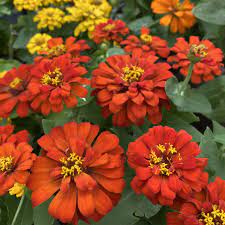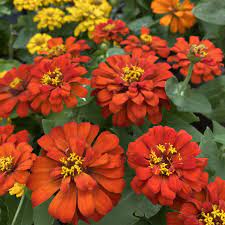Chrysanthemums and the Symbolism of Life and Renewal**

Chrysanthemums, with their rich cultural history and symbolic significance, hold profound meaning regarding life, renewal, and resilience. This section explores the multifaceted symbolism of chrysanthemums, highlighting their associations with vitality, longevity, and the cyclical nature of existence.
**1. Symbol of Vitality:**
Chrysanthemums symbolize vitality and vigor, representing the essence of life itself. Their vibrant blooms and robust growth reflect the energy and vitality inherent in all living beings. In many cultures, chrysanthemums are admired for their ability to thrive in adverse conditions, emerging victorious despite challenges and hardships. As symbols of vitality, chrysanthemums remind us to embrace life’s challenges with resilience and determination, celebrating the inherent strength and beauty of the human spirit.
**2. Emblem of Longevity:**
Chrysanthemums are often associated with longevity and immortality, revered for their enduring beauty and resilience. In traditional Chinese culture, chrysanthemums symbolize longevity and prosperity, with the flower’s name “Ju Hua” phonetically similar to the word for “longevity.” Similarly, in Japanese culture, chrysanthemums are regarded as symbols of longevity and the imperial family, featured prominently in the country’s art, literature, and national symbols. By embodying the concept of longevity, chrysanthemums inspire us to cherish each moment and embrace the passage of time with grace and dignity.
**3. Sign of Renewal:**
Chrysanthemums symbolize renewal and regeneration, embodying the cyclical nature of life and the changing seasons. As perennial plants capable of blooming year after year, chrysanthemums herald the arrival of autumn and the promise of new beginnings. In many cultures, chrysanthemums are associated with festivals and ceremonies celebrating harvests, reunions, and the cycle of life. By symbolizing renewal, chrysanthemums encourage us to embrace change, release the past, and embrace the opportunities for growth and transformation that lie ahead.
**4. Metaphor for Resilience:**
Chrysanthemums serve as a metaphor for resilience and adaptability, thriving in a variety of climates and environments. Their ability to withstand harsh weather conditions, pests, and diseases symbolizes the resilience of the human spirit in the face of adversity. Chrysanthemums teach us to bend but not break, to endure hardships with patience and fortitude, and to emerge stronger and more resilient than before. By embodying the qualities of resilience and adaptability, chrysanthemums inspire us to overcome obstacles and persevere in the pursuit of our goals and dreams.
**5. Cultural Significance:**
Chrysanthemums hold cultural significance in many societies around the world, representing life, renewal, and the enduring beauty of nature. From ancient times to the present day, chrysanthemums have been celebrated in art, literature, and religious ceremonies, serving as symbols of hope, inspiration, and spiritual enlightenment. By honoring the symbolism of chrysanthemums, we pay tribute to the inherent beauty and resilience of life itself, finding solace and inspiration in the timeless wisdom of nature’s creations.
**Conclusion:**
Chrysanthemums embody the profound symbolism of life, renewal, and resilience, inspiring us to embrace the inherent beauty and vitality of existence. As symbols of vitality, longevity, renewal, and resilience, chrysanthemums remind us to cherish each moment, embrace change, and persevere in the face of adversity. By honoring the symbolism of chrysanthemums, we celebrate the enduring spirit of life and find solace and inspiration in the cyclical rhythms of nature’s eternal dance.
**Part 2: Chrysanthemums and the Significance of Life and Recovery**
In this section, we delve deeper into the symbolism of chrysanthemums regarding life and recovery, exploring their cultural significance and therapeutic properties that inspire hope, healing, and renewal.
**1. Cultural Significance:**
Chrysanthemums hold profound cultural significance worldwide, symbolizing life, vitality, and the resilience of the human spirit. In Asian cultures, particularly in China and Japan, chrysanthemums are revered symbols of longevity, prosperity, and rejuvenation. They feature prominently in art, literature, and religious ceremonies, embodying the cyclical nature of life and the perpetual cycle of renewal. Chrysanthemum festivals, such as the Double Ninth Festival in China and the Chrysanthemum Day in Japan, celebrate the flower’s beauty and significance, inviting people to reflect on the fleeting nature of life and the enduring power of resilience.
**2. Healing Properties:**
Chrysanthemums possess therapeutic properties that have been recognized for centuries in traditional medicine systems such as Traditional Chinese Medicine (TCM). The flower’s petals, leaves, and roots contain bioactive compounds with antioxidant, anti-inflammatory, and antimicrobial properties. Chrysanthemum tea, brewed from dried chrysanthemum flowers, is consumed for its calming and detoxifying effects, promoting relaxation, and alleviating stress. In TCM, chrysanthemum extracts are used to treat various ailments, including headaches, fever, inflammation, and eye disorders. The flower’s soothing aroma and medicinal properties make it a cherished remedy for promoting physical and emotional well-being.
**3. Symbol of Hope and Recovery:**
Chrysanthemums symbolize hope and recovery, inspiring individuals to overcome adversity and embrace the journey of healing and renewal. Following natural disasters, wars, or personal hardships, chrysanthemums symbolize resilience and the indomitable spirit of survival. In times of grief and loss, chrysanthemums offer solace and comfort, serving as symbols of remembrance and tribute to the resilience of the human spirit. The flower’s association with recovery and rejuvenation instills hope and optimism, reminding us that even in the darkest of times, there is always the possibility of renewal and regeneration.
**4. Environmental Restoration:**
Chrysanthemums play a role in environmental restoration efforts, particularly in areas affected by pollution or ecological degradation. Due to their ability to absorb heavy metals and toxins from the soil, chrysanthemums are used in phytoremediation projects to detoxify contaminated land and restore ecological balance. By harnessing the natural detoxifying properties of chrysanthemums, scientists and environmentalists aim to rehabilitate polluted environments and promote sustainable land use practices. Through their contribution to environmental restoration, chrysanthemums symbolize the resilience of nature and the potential for regeneration and healing in our fragile ecosystems.
**5. Personal Reflection and Growth:**
Chrysanthemums invite personal reflection and growth, encouraging individuals to embrace life’s challenges as opportunities for learning and transformation. The flower’s intricate blooms and vibrant colors symbolize the beauty and complexity of the human experience, reminding us to appreciate the diversity and richness of life. Through the metaphor of chrysanthemums, we learn to navigate life’s ups and downs with resilience, grace, and gratitude, finding strength and inspiration in the process of growth and renewal.
**Conclusion:**
Chrysanthemums hold profound significance regarding life and recovery, embodying the resilience, hope, and healing that permeate the human experience. From their cultural symbolism to their therapeutic properties and environmental contributions, chrysanthemums inspire us to embrace life’s challenges with courage and optimism, trusting in the inherent capacity for renewal and regeneration. As symbols of life and recovery, chrysanthemums remind us of the enduring power of the human spirit to overcome adversity and emerge stronger, wiser, and more resilient than before.


